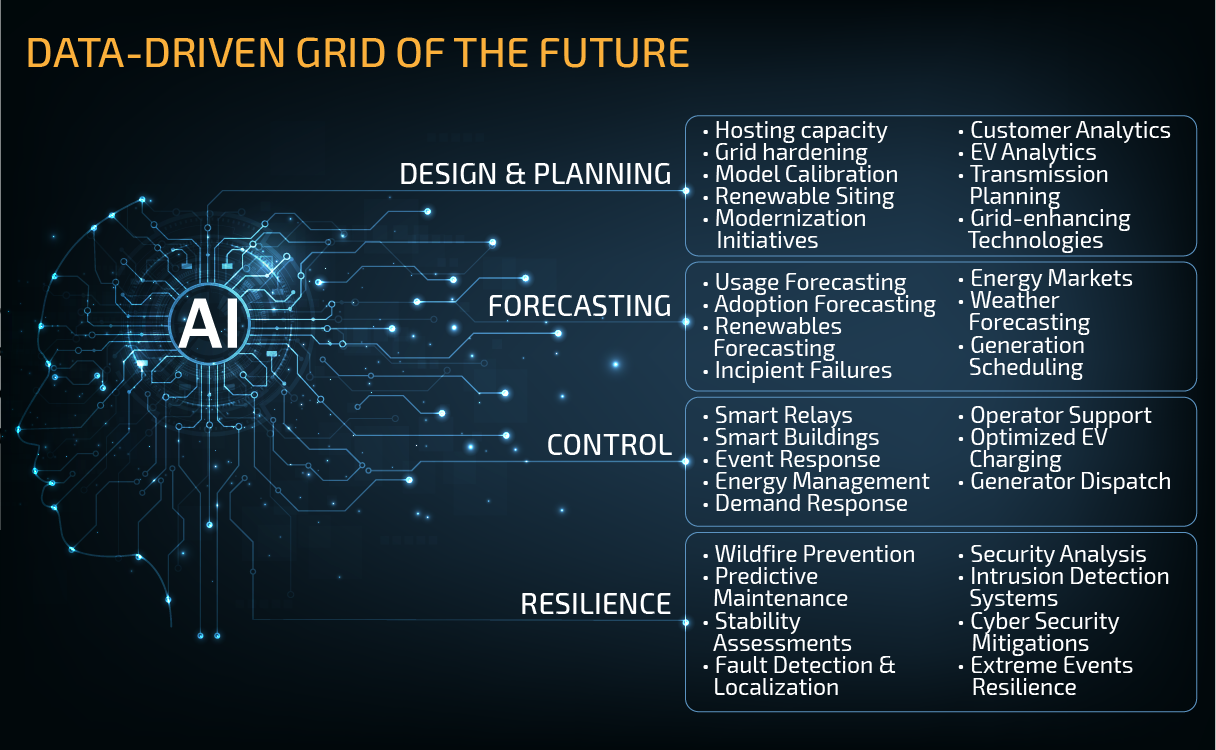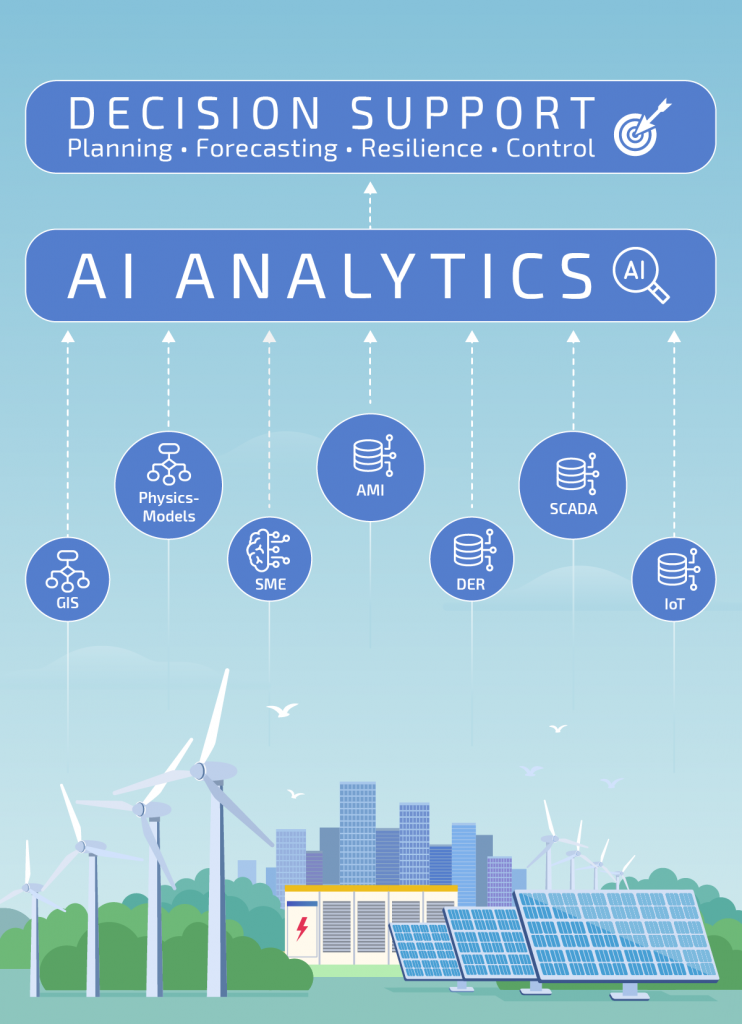
Vision: Revolutionize the electric power grid through innovative AI/ML research to provide unprecedented efficiency, resilience, and sustainability
The increased prevalence of sensors in the grid, ranging from phasor measurement units (PMUs) to advanced metering infrastructure (AMI) in distribution networks, has resulted in an explosion of grid data. Machine learning techniques are well suited for making inferences from this Big Data. Examples include applying machine learning techniques to AMI data to identify model errors in distribution networks to using machine learning algorithms to improve the operation of protective relays. Machine learning and data analytics is an important component of Sandia’s Advanced Grid Modeling (AGM) program. Artificial intelligence (AI) through data fusion and data analytics have the capability to produce actionable intelligence and decision support for grid operators and utilities. AI provides a cross-cutting toolset to revolutionize each thrust of the energy program, from wildfire resilience and renewables integration to microgrids and cyber-physical system analysis. Sandia is at the forefront of using AI algorithms, machine learning, and other data analytics to provide critical insights for a modern power grid.
View the Electric Grid: Artificial Intelligence and Machine Learning Research at Sandia overview

- Trustworthy and verifiable AI algorithms provide accountability with critical infrastructure.
- Massive historical datasets are leveraged to calibrate, validate, and correct utility models of the power system, aiding in power systems planning.
- Algorithms are used to detect, classify, and localize fault events for improved reliability and reduced wildfire risk.
- Predictive analytics are used to quantify asset health and incipient device failure.
- Reinforcement learning provides grid control and decision advantage to grid operators.
- Forecasting algorithms provide look-ahead capability for both normal and abnormal operating conditions.
- Customer pattern learning provides capability for advanced load control and responding to individual customer needs.
- Increased visibility provides insight into power grid resilience and reliability goals.
- Insights are used to plan and respond to extreme events such as hurricanes or polar vortex.
- Physics-informed algorithms are developed that are adaptable to different grid architectures and operational contexts.
- Cybersecurity is enhanced through AI-based threat detection and response systems.
- Holistic analysis of the cyber-physical system provides detailed insight into the current system state.
- AI standards and regulator engagement for the usage of ML/AI in power systems are leveraged, promoting interoperability, and engaging with regulators to advocate for the adoption of AI technologies in the power sector.
- Ethical and Equitable AI implementations are prioritized in the development and deployment of sustainable AI algorithms.
Work with Us
We partner with large and small businesses, universities, and government agencies. With multiple agreement types to select from, partners can access world-class science, engineering, experts, and infrastructure.
